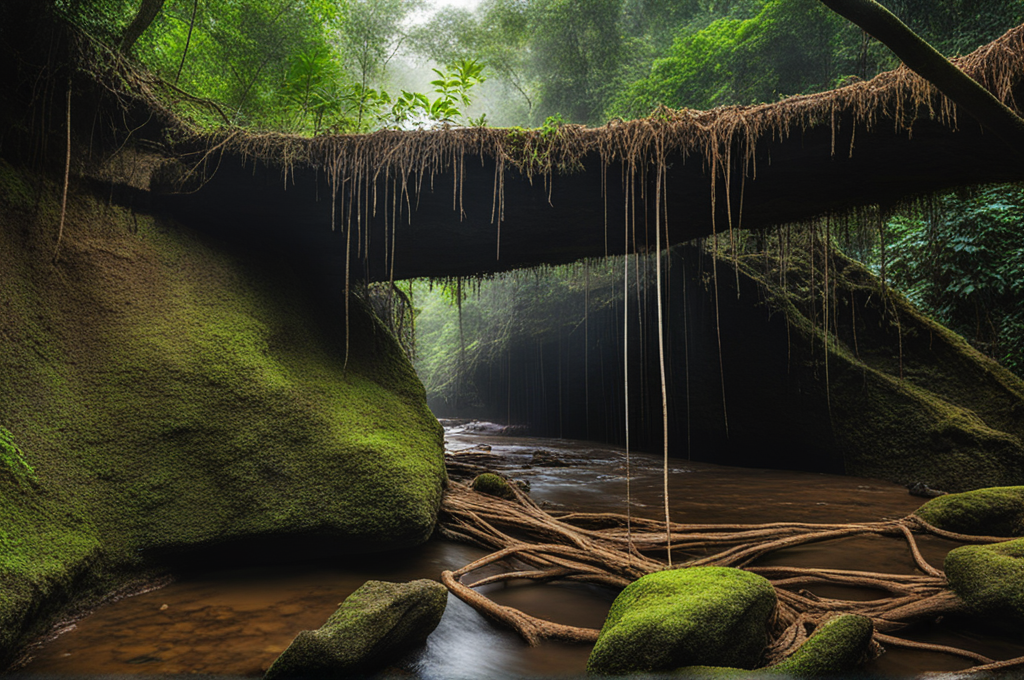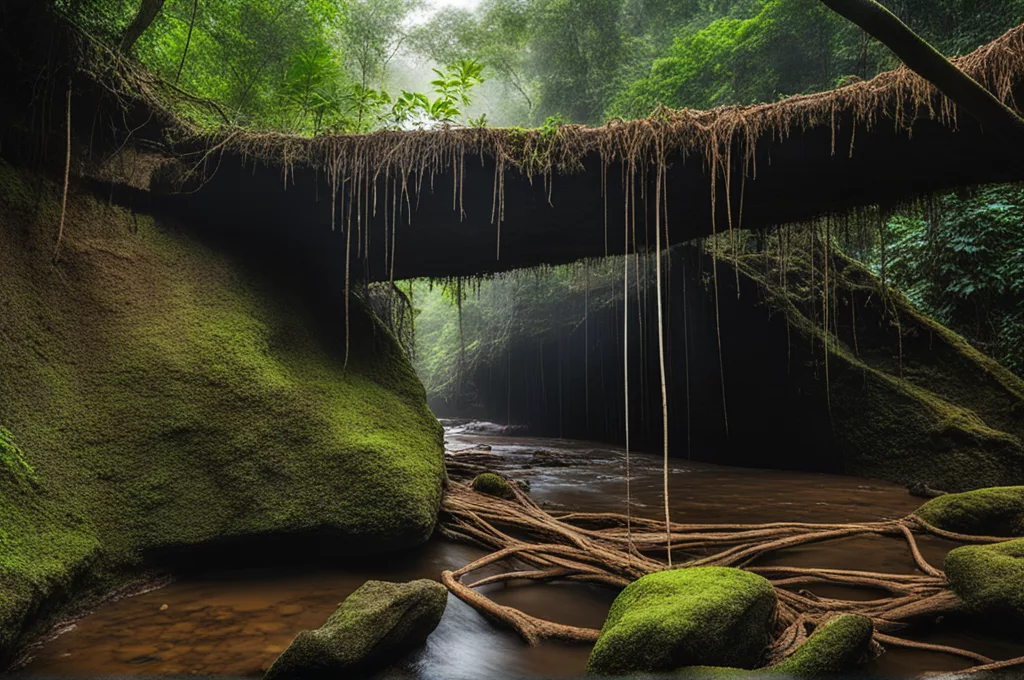 —
—
Discover the Marvel of Meghalaya: Living Root Bridges
Enveloped by verdant landscapes, Meghalaya, the ‘Abode of Clouds’, is a hidden gem in northeastern India. Its lush forests and cascading waterfalls have captured the hearts of nature enthusiasts worldwide. Among its myriad wonders, the living root bridges stand out as true architectural marvels that blend seamlessly with nature.
What Are Living Root Bridges?
The living root bridges are natural bridges crafted by the roots of rubber vine (Ficusasperifolia) over rivers and valleys. This fascinating process takes place over several decades. Initially, the rubber vine’s roots grow over tree branches and eventually, these roots intertwine, forming a bridge. The roots are then reinforced with the help of the Khasi people. The living root bridges are an epitome of harmony with nature.
The Unique Process Behind the Living Root Bridges
Root bridges are a result of a unique symbiosis between humans and nature. The process of creating these bridges involves a combination of art, tradition, and patience. The Khasi people, the indigenous people of Meghalaya, are the guardians of this living heritage. The rubber vine, or ‘Rangjih’, grows naturally over tree branches and then over time, its roots start weaving through each other. This organic growth takes place over a period of 20-30 years. When the roots grow strong enough, they are reinforced by the Khasi people, who tie them together with ropes and bamboo to provide structural support, creating a solid bridge over the river.
Some of Meghalaya’s Living Root Bridges
Double Dealing Ground
The Double Dealing Ground, also known as Rwting Jyllang Jymbor, is one of the most well-known living root bridges in Meghalaya. Its roots are said to have started growing in the 1900s and were completed in the early 1970s. The bridge is 70 feet long, 20 feet high, and supports a weight of up to 5 people.
Mawhlunhna (Mawhlynwre) and Mawkyrmaw
The Mawhlunhna and Mawkyrmaw bridges are two more famous living root bridges. While both are unique, they are different in the way they were created. Mawhlunhna, also known as Mawhlynwre, was completed in the 1960s. Its roots were reinforced with bamboo. On the other hand, Mawkyrmaw was completed in the 1990s. Its roots were reinforced with ropes. These bridges are both a testament to the Khasi people’s creativity and patience.
Exploring the Living Root Bridges
While the living root bridges are natural wonders, they require some effort to reach. They can be found in the village of Mawhnong in Jirang Village. The nearest town is Shillong, about 50 km away. The easiest way to reach the village is by hiring a car from Shillong. The living root bridges are located just 2 km away from the Jirang Village. A visit to the village will not only allow you to witness these architectural marvels but also offer you insights into the Khasi culture.
Conclusion
Living root bridges in Meghalaya are a testament to humanity’s ability to harmonize with nature. These bridges are not just architectural marvels but also a living heritage. They symbolize the Khasi people’s deep-rooted connection with nature and their belief in the power of time-honored traditions. Meghalaya’s living root bridges are a must-visit attraction and an unforgettable experience that you simply cannot afford to miss.
